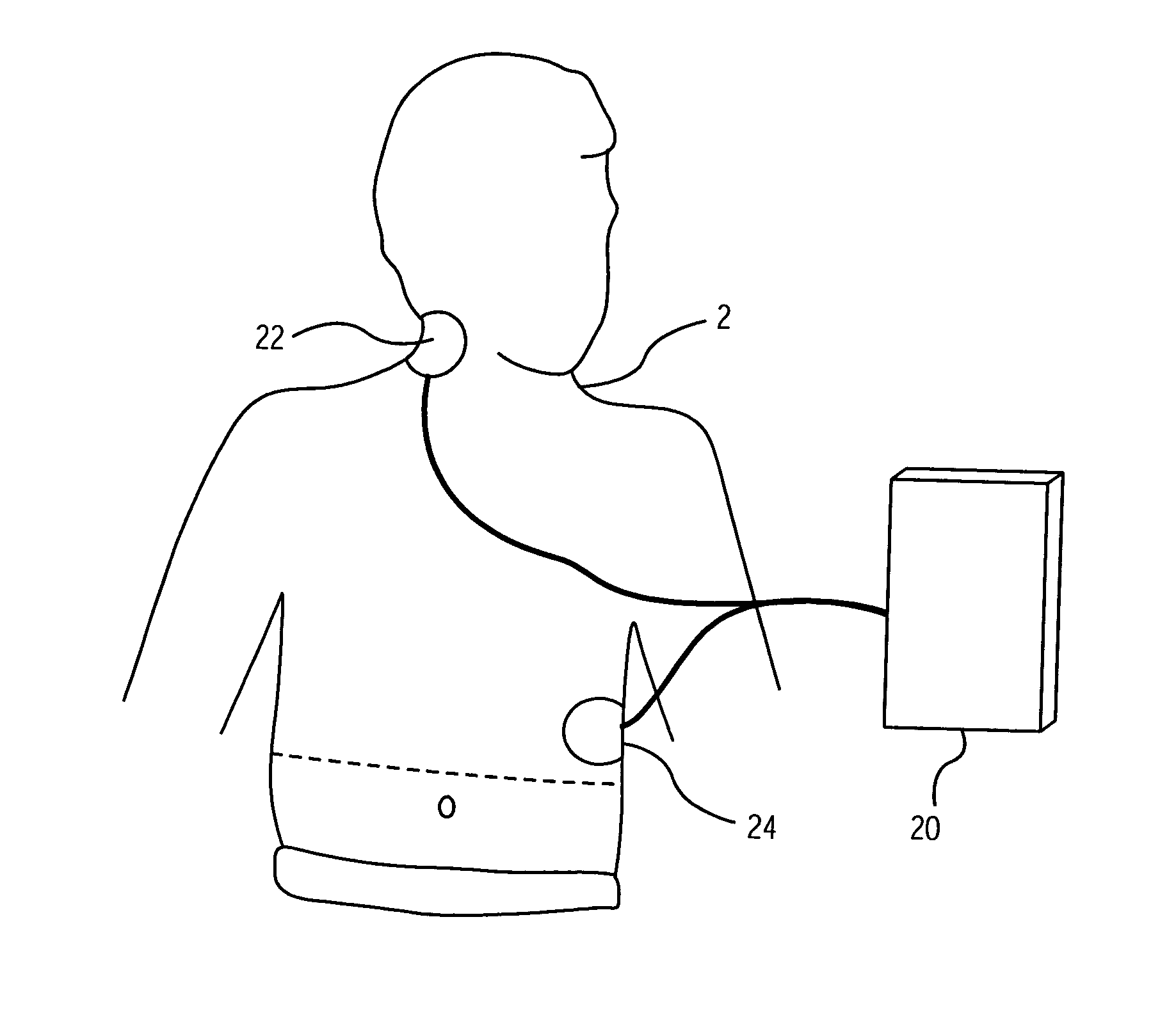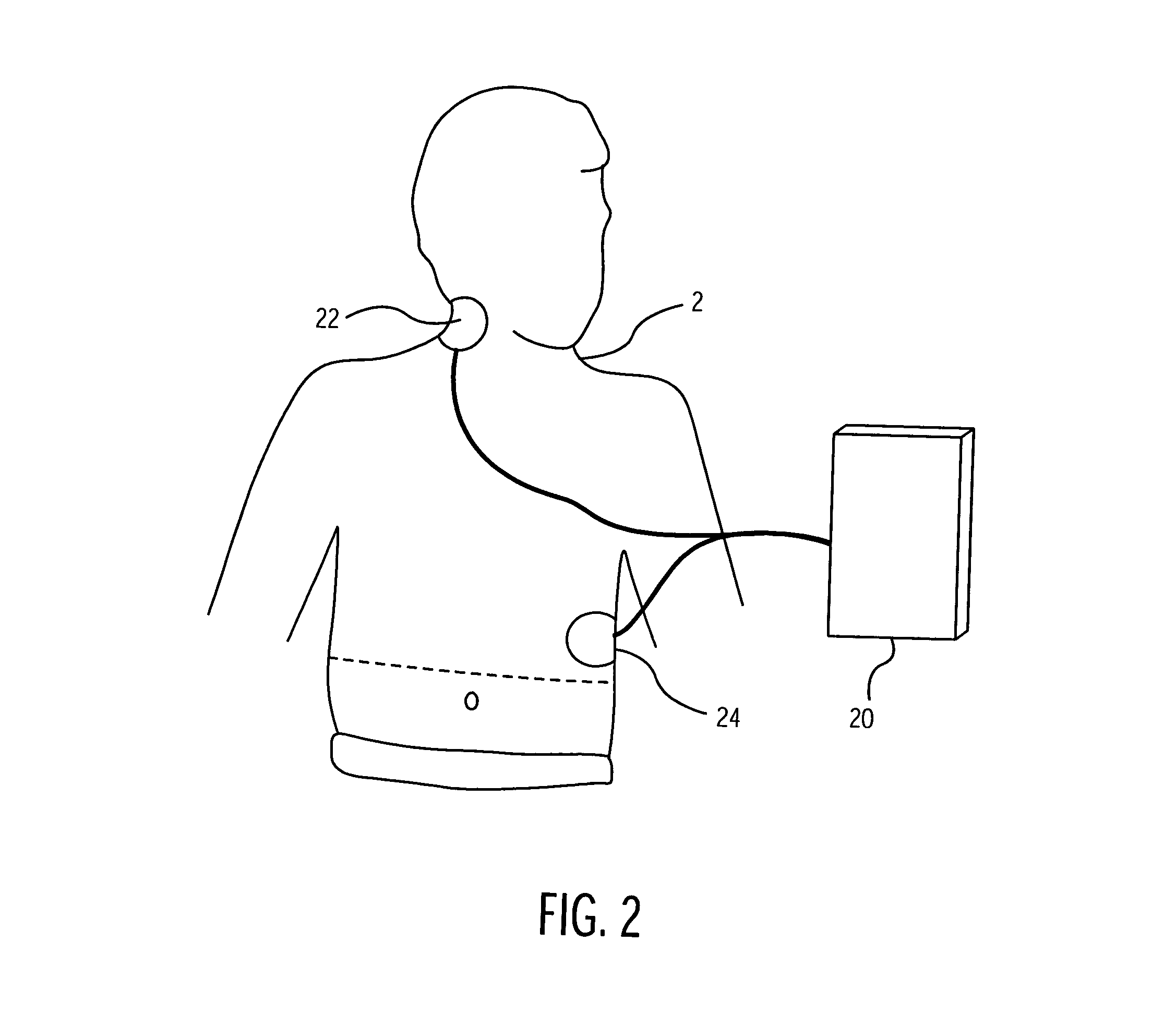Defibrillation system and method designed for rapid attachment
a defibrillator and fast technology, applied in the field of defibrillators, can solve the problems of electrode deterioration, fibers within the heart to contract in unsynchronized ways, and the heart cannot pump blood effectively, and achieve the effect of quick and accurate application of defibrillator shocks
- Summary
- Abstract
- Description
- Claims
- Application Information
AI Technical Summary
Benefits of technology
Problems solved by technology
Method used
Image
Examples
Embodiment Construction
[0022]In the following description, for purposes of explanation rather than limitation, specific details are set forth such as the particular architecture, interfaces, techniques, etc., in order to provide a thorough understanding of the present invention. For purposes of simplicity and clarity, detailed descriptions of well-known devices, circuits, and methods are omitted so as not to obscure the description of the present invention with unnecessary detail.
[0023]Now, a description will be made in detail in regards to this invention with reference to the drawings.
[0024]FIG. 2 illustrates a defibrillator system 20 with a pair of electrodes 22 and 24 according a preferred embodiment of the present invention as it would be applied to a cardiac arrest victim 2. As shown in FIG. 2, one electrode 22 (hereinafter referred to as “necktrode”) is positioned on the right side of the patient's neck 2, above the collarbone, whereas the other electrode 24 is positioned at the lower left base of t...
PUM
 Login to View More
Login to View More Abstract
Description
Claims
Application Information
 Login to View More
Login to View More - R&D
- Intellectual Property
- Life Sciences
- Materials
- Tech Scout
- Unparalleled Data Quality
- Higher Quality Content
- 60% Fewer Hallucinations
Browse by: Latest US Patents, China's latest patents, Technical Efficacy Thesaurus, Application Domain, Technology Topic, Popular Technical Reports.
© 2025 PatSnap. All rights reserved.Legal|Privacy policy|Modern Slavery Act Transparency Statement|Sitemap|About US| Contact US: help@patsnap.com



